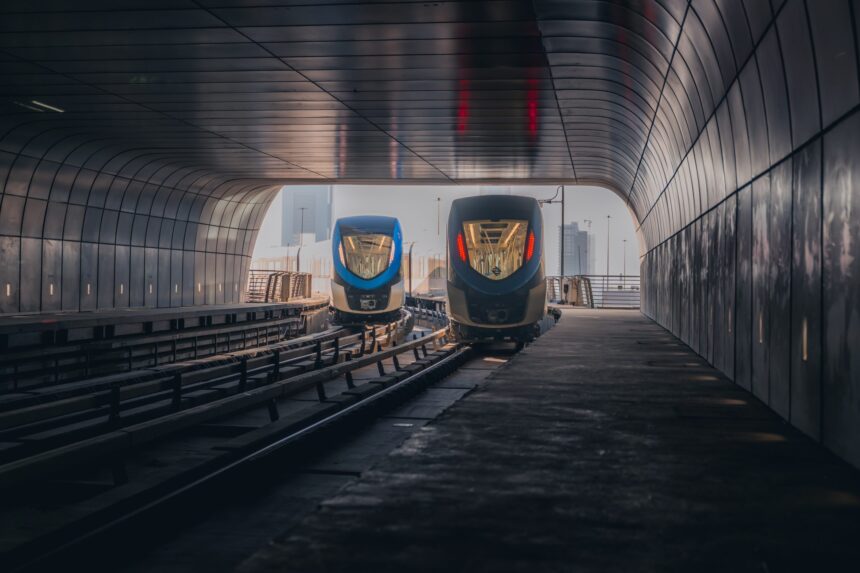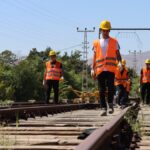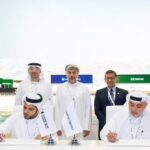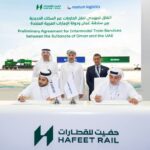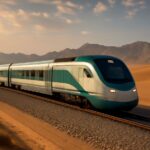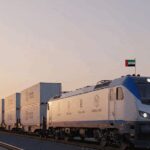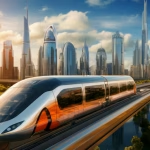Town of Riyadh, Saudi Arabia, is often characterised by sprawling highways and a heavy reliance on non-public vehicles. Nevertheless, in recent times, the Royal Fee for Riyadh Metropolis (RCRC) has commenced a transformative shift in the direction of mass transport.
The Riyadh Metro
The Riyadh Metro is central to the town’s transport transformation. Launched in December 2024, the service helps to redefine city mobility within the capital, providing a quick, environment friendly and environmentally pleasant different to automobile journey.
Riyadh Metro
© Royal Fee for Riyadh Metropolis
The community consists of six strains spanning over 176 kilometres and connecting 85 stations, which combine with bus networks and taxi providers. The service gives trendy, air-conditioned stations and automobiles, good ticketing methods and real-time digital journey planning.
In August this 12 months, the Royal Fee for Riyadh Metropolis celebrated serving 100 million passengers on the community, highlighting the profitable uptake of ridership within the first 9 months of service. Passenger knowledge confirmed that the Blue Line, working alongside the Olaya Street axis, had been the busiest, carrying round 46.5 million folks. In the meantime, the Purple Line, serving King Abdullah Street, carried about 17 million passengers, whereas the Orange Line alongside Madinah Street carried 12 million.
Aiding this success, the metro recorded a punctuality price of 99.78 % for the reason that begin of operations, making it a dependable and efficient transportation choice for each guests and residents.
Metro Extensions
To additional lengthen the attain of the town’s Metro community, a number of enlargement tasks are presently underway. Earlier this 12 months, a contract to increase Line 2 was awarded to the Arriyadh New Mobility Consortium, which consists of Webuild, Larsen & Toubro, Nesma & Companions, Hitachi, Ansaldo STS, Bombardier, Idom and WorleyParsons. Riyadh Metro Transit Consultants (RMTC), comprised of Parsons, Egis and Systra, will supervise the extension work.
The Line 2 extension will span a further 8.4 kilometres, with 1.3 kilometres of elevated line and seven.1 kilometres underground. It should serve 5 new stations: KSU Medical Metropolis, KSU West, Diriyah East, Diriyah Central and Diriyah South. The brand new Diriyah Central may even function an interchange with the deliberate Line 7.
The development of the brand new Line 7 is presently within the planning and tendering levels. The road is predicted to be 65 kilomtres lengthy with 19 stations, 14 of which shall be underground. It should hyperlink Qiddiya Leisure Metropolis, King Abdullah Worldwide Gardens, King Salman Park, New Murabba, Misk Metropolis, and Diriyah Gate. The present tender for its design and construct runs till 30 November.
Riyadh Metro
© Royal Fee for Riyadh Metropolis
Qiddiya Excessive-Velocity Rail
Along with increasing its city rail community, the Royal Fee for Riyadh Metropolis can also be growing a high-speed rail line connecting King Salman Worldwide Airport, the King Abdullah Monetary District, and Qiddiya Metropolis at speeds as much as 250km/h. The tip-to-end journey time between these factors is predicted to be roughly half-hour.
In September, 2025, the Expression of Curiosity (EOI) section for this undertaking was launched in collaboration with the Nationwide Heart for Privatisation & PPP and Qiddiya Funding Firm.
Current Rail Networks
These new developments complement long-standing rail providers in Saudi Arabia, such because the East Practice service between Riyadh and Dammam, which has been working since 1981 and stays certainly one of Saudi Arabia’s busiest intercity routes. Managed by the Saudi Arabia Railways (SAR), the road spans round 450 kilometres and connects Riyadh with Al-Hofuf, Abqaiq and Dammam.
To enhance service high quality and enhance capability on this line, SAR has not too long ago invested in fleet modernisation. In 2024, Stadler signed a contract to provide ten new FLIRT Intercity trains, designed particularly for the Riyadh–Dammam hall. These trains will improve passenger consolation with trendy interiors, greater seating capability and superior security methods, whereas additionally decreasing journey instances and boosting operational effectivity.
Alongside the East Practice, the North-South Railway (the world’s longest steady line at practically 2,750 kilometres) connects Riyadh to the northern mining areas and extends in the direction of Al-Haditha close to the Jordanian border. This line gives hyperlinks between Riyadh, Majmaah, Qassim, Hail, Al-Jouf and Qurayyat.
Collectively, these established intercity routes and the deliberate rail expansions place Riyadh and Saudi Arabia as pacesetters in advancing rail infrastructure.This drive aligns with Saudi Arabia’s Imaginative and prescient 2030, which seeks to modernise infrastructure, scale back congestion and promote sustainable city progress.
Challenges
Notably, setting up rail hyperlinks in Riyadh’s desert setting has not been with out challenges. Engineers have needed to innovate options for excessive warmth, sandy soil and sprawling city layouts.
As an example, the Riyadh Metro required the set up of specialized cooling and air flow methods in each trains and stations to keep up consolation in summer season temperatures, which regularly exceed 45°C. Equally, development crews needed to repeatedly handle sand infiltration throughout tunnelling works, with tunnel boring machines geared up with pressurised shields to stabilise unfastened soil.
Town’s huge highways and car-centric improvement additionally posed engineering hurdles. Constructing the Blue Line alongside Olaya Street concerned deep underground excavation beneath certainly one of Riyadh’s busiest business corridors, requiring visitors diversions and cautious coordination to minimise disruption..
Encouraging Modal Shift
General, Riyadh’s funding in mass transit demonstrates that even cities lengthy dominated by non-public automobile use can rework mobility patterns. The speedy uptake of the Riyadh Metro, the continuing enlargement of its strains, and the deliberate Qiddiya Excessive-Velocity Rail illustrate the ambition and the sensible progress of the town’s transport technique.
Trying forward, the long-term success of Riyadh’s transport transformation would require additional integration with buses, pedestrian pathways and park-and-ride amenities, creating an accessible and sustainable community that encourages residents to depart their vehicles behind.
Via these developments, Riyadh gives a compelling mannequin for different quickly rising, car-dependent cities looking for to modernise their city mobility in keeping with world sustainability objectives.
This function first appeared within the newest version of the Railway-Information digital journal.
Tags


